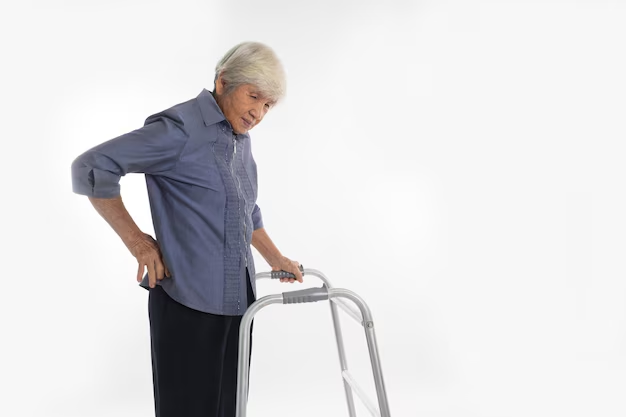Can Osteoporosis Lead to Chronic Back Pain?
Osteoporosis, a condition characterized by weakened bones, often raises questions about its connection to back pain. While osteoporosis itself doesn't directly cause pain, its effects on the spinal column can easily lead to discomfort. Understanding this connection can help you find effective treatment and manage symptoms, potentially improving your quality of life.
How Osteoporosis Affects Bone Health
Osteoporosis leads to reduced bone density, making bones susceptible to fractures and breaks. The spine, composed of interconnected vertebrae, is one of the most common sites for these fractures. Known as vertebral compression fractures, these small breaks can cause sudden or gradual back pain, spine deformity, and even height loss. The pain may begin in the back and radiate to the sides or abdomen.
Recognizing Back Pain Caused by Osteoporosis
Back pain associated with osteoporosis often presents in distinct forms:
- Acute pain from a sudden fracture
- Chronic pain from multiple fractures over time
- Discomfort from changes in spinal structure and alignment
If you're experiencing unexplained back pain, it may be worthwhile to explore the possibility of underlying bone health issues with a healthcare provider.
Managing Osteoporosis and Alleviating Back Pain
Effective management of osteoporosis and its related back pain focuses on preventing fractures and maintaining bone strength. Here are some strategies:
- Medication: Prescriptions can help increase bone density.
- Physical therapy: Improves posture, strengthens muscles, and stabilizes the spine.
- Nutrition: Ensure adequate intake of calcium and vitamin D.
- Lifestyle changes: Regular exercise and smoking cessation can improve bone health.
Financial and Educational Resources for Support
Managing a condition like osteoporosis can present unforeseen financial burdens. While medical treatments can be costly, there are several resources available to ease this burden.
- Medicare and Medicaid: These programs often cover osteoporosis treatments and necessary diagnostic tests.
- Supplemental Nutrition Assistance Program (SNAP): Offers financial assistance to purchase nutritious foods essential for bone health.
- Patient Assistance Programs: Many pharmaceutical companies provide medications at reduced costs or even for free to those who qualify.
Explore Financial and Educational Programs
Here’s a handy list of resources that could ease the financial strain of managing osteoporosis:
- 📋 Medicaid and Medicare: Government healthcare programs that may cover osteoporosis-related treatments.
- 🛒 SNAP Benefits: Assistance for purchasing calcium and vitamin D-rich foods.
- 💊 Patient Assistance Programs: Access to discounted or free prescription medications.
- 📚 Educational Grants: Opportunities for training as a medical professional, focusing on specialties like nutrition or physical therapy.
- 💳 Low-Interest Credit Options: Manage healthcare costs with a sustainable payment plan.
By understanding the serious relationship between osteoporosis and back pain, you can take steps towards treatment and prevention. Coupled with financial aid options, managing your health becomes a more achievable goal, allowing you to focus on what truly matters: living your life to the fullest, without the constant burden of pain.

Related Topics
- a Nurse Is Caring For a Client Who Has Osteoporosis.
- a Percutaneous Is Performed To Treat Osteoporosis Related Compression Fractures
- Can Alcohol Cause Osteoporosis
- Can I Do Pilates If I Have Osteoporosis
- Can I Reverse Osteoporosis
- Can Men Get Osteoporosis
- Can Osteoporosis Affect Teeth
- Can Osteoporosis Be Cured
- Can Osteoporosis Be Painful
- Can Osteoporosis Be Reversed